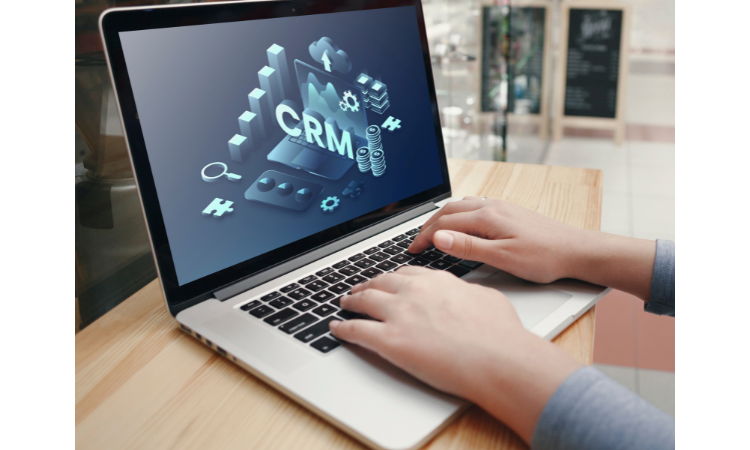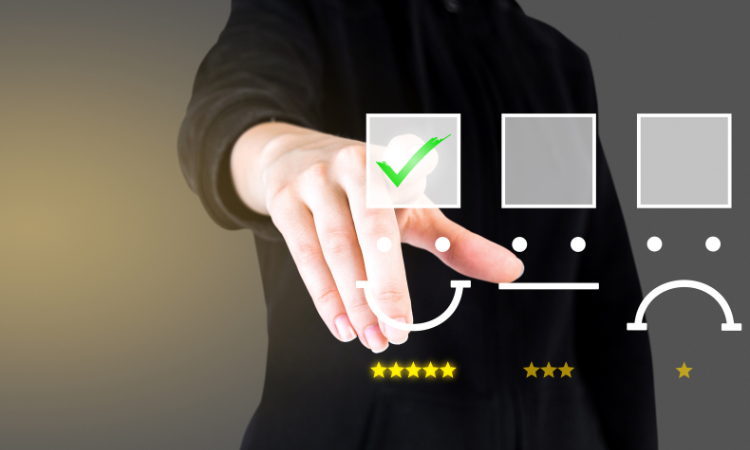Looking for ways to enhance customer experience? Opt for multi-channel customer satisfaction strategies to meet the needs of your customers and build stronger relationships with them.
Ever wondered about the secret behind the massive success of customer-centric companies like Amazon or Zappos?
Amazon's multi-channel system is like a magician's trick - every channel is interconnected, and your product preferences are automatically synced across all platforms. It's like they can predict what you want before you even know it!
And then there is Zappos! It has also made waves by delivering outstanding customer service through multiple channels, from phone to live chat to social media. Their implementation is so smooth that when their employees assist customers, they do not have to repeat their concerns as the employees already have access to the required information.
Here's the thing - offering a good product or service is no longer enough to get a smashing score on the customer satisfaction scale. Customers want to connect with businesses on their own terms, using their preferred channels of communication. That's where opting multi-channel customer satisfaction strategy comes in!
Measure Customer Satisfaction and Improve Customer Experience🔥
Create customized surveys and feedback forms and take real-time feedback from your customers at all touchpoints.

In this blog, we'll dive deeply into the world of multi-channel customer satisfaction strategies. We'll explore how you can provide a seamless customer experience by integrating multiple channels to streamline your business processes and improve customer satisfaction. So let’s begin by understanding why having a multi-channel customer satisfaction strategy is important.
Table of Content
Top Strategies for Multi-Channel Customer Satisfaction
Every successful SaaS or product company swears by using multiple channels to increase customer satisfaction. These companies have focussed on increasing client engagement and customer interaction through targeted marketing and providing a personalized experience to each customer.
Let us look at the top multi-channel customer satisfaction strategies that can be implemented to benefit your business.
1. Defining Goals and Metrics
To maximize benefits from a multi-channel customer satisfaction strategy, you should begin by defining your goals and metrics that align with your overall business objective, product roadmap, and initiatives. What KPIs will reflect your success? A reduced churned rate, increased CLV, or enhanced retention.
Based on the KPIs, choose different customer satisfaction metrics to measure feedback. You can opt for Net Promoter Score, Customer Satisfaction, or Customer Effort Scores by creating surveys with a feedback tool like Zonka Feedback to determine customer satisfaction levels.
Tips for defining multi-channel customer satisfaction goals:
- Define Goals based on the Product: When setting goals, it's important to take the product into consideration. If the product has been on the market for a while, it may be best to use a bottom-up approach to tie goals to the top-line metric. If the product is new, a top-down approach can be used to assess performance relative to external benchmarks.
- Set Time-Bound Goals divided across Time Frames: Set goals with a clear timeline and at various intervals to keep the focus and progress in mind. It will help to create a more systematic approach to goal-setting.
- Follow 80-20 and then 50-50 Goals: It's important that you begin with achievable 80-20 goals to establish momentum and build towards more challenging 50-50 goals. It can help drive positive results and maximize the effectiveness of the multi-channel customer satisfaction strategy.
2. Opting Omnichannel Approach
By extending the multi-channel customer satisfaction approach to an omnichannel strategy, you can not only offer customers to reach out to you from multiple channels but also ensure an optimized customer experience by unifying all channels. Companies like HubSpot, Zendesk, and Intercom alternatives have benefited immensely by following an omnichannel approach.
a. Integrate with all Customer Communication Channels
An omnichannel customer satisfaction approach involves integrating all channels of customer communication. Combining multiple channels to communicate with your business allows your customers to engage with your company on their terms and preferences.
For instance, you are using Salesforce as your CRM, Intercom as your messaging platform, Zonka Feedback as your survey software, and Slack as your communication channel. You can use Salesforce integration, Intercom integration, and other integrations with your products to sync everything together in one place. This ensures that you now where the customer is in the journey, no matter which platform
In Zonka Feedback, you can integrate your customer feedback data to various software like HubSpot, Zendesk, Slack, etc., to access a unified place. Additionally, you can allow your customers to choose from multiple survey channels, whether email, sms, website, in-app, or offline to give feedback and analyze the data to understand customer sentiment.
b. Customer Journey Mapping
By tracking customer interactions across different channels, you can gain valuable insights into customer behavior, preferences, and pain points. This, in turn, enables you to improve the customer experience and develop more targeted marketing campaigns.
In Zonka Feedback, you can map customer journeys at various touchpoints by taking surveys and understanding customer experience. For example, you can embed an NPS survey to ask post-purchase survey questions, asking for feedback on the overall shopping experience. If the survey score suggests that the majority of the customers are detractors, you can reach out to them personally and identify their reason for dissatisfaction.
3. Collecting Feedback Surveys from Multiple Channels
When it comes to multi-channel customer satisfaction, collecting feedback from various channels is only half the battle. To truly succeed, it's essential to understand which channels your customers are most comfortable with and place feedback surveys on those channels at the right time. By doing so, you can significantly increase the response rate and gather a more comprehensive view of the customer experience.
After all, the ultimate goal is to create a seamless and personalized experience for every customer, and that can only be achieved by understanding their preferences and needs. So, take the time to analyze your customer base and tailor your feedback strategy accordingly. Your efforts will pay off in the form of loyal and satisfied customers who are willing to spread the word about your brand. Here are some of the most common channels through which you can collect customer feedback.
a. In-App
By using a customer feedback in-app survey, you can receive feedback from customers who are surfing your application and get an insight into the customers' experience. In-app feedback surveys can help gather insights on app-specific experiences that other channels may not capture, thereby creating effective product feedback for software-related issues.
Things to keep in mind while using the in-app feedback channel:
- Time the in-app feedback survey at a suitable point in the users' journey
- Opt for a smiley feedback button to maximize the response rate in-app
- Create a tailored survey for your in-app users based on their behavior patterns
- Design and launch your in-app survey without interrupting the user experience
b. Email
Email feedback collection can work like magic in obtaining quantitative data. Even if your email open rate is low, you can stay assured that those customers who are opening your survey across the email are invested in your brand, and knowing the ‘why’ to their score is essential for your business to remove the bottleneck.
How to create an engaging email feedback survey for multi-channel customer satisfaction?
- Create a personalized email survey with a compelling subject line
- Mention the time that the survey would take to complete so that respondents get an idea
- Optimize the feedback survey for mobile screens or tablets
- Customize the email survey in terms of questions (open-ended/closed-ended questions), length, and images.
In Zonka feedback, you automatically trigger email notifications to your desired set of customers by leveraging workflow automation. For example, if your customers have not yet taken up the CSAT survey, you can automatically trigger an email requesting to take up the CSAT survey.
c. Website
By embedding a feedback survey on the website, you can gather in-moment customer feedback. Website surveys can be a convenient touchpoint for customers to share their experiences and opinions in real-time.
Here are the top reasons why you should consider opting for website surveys:
- Readily available and accessible for visitors to share their website feedback with just a click
- Collecting feedback from a website by asking the right website satisfaction survey questions or website usability survey questions is more cost-effective than traditional phone surveys
- Helps in capturing feedback from selected segments through in-built targeting options
- Can improve conversion rates by allowing you to perform A/B tests based on feedback
d. SMS
With an open rate of about 99% and 97% of messages being read within 15 minutes of delivery, sms surveys can be one of the best bets for sending customer feedback surveys. By opting for the sms channel, you can easily grab your customer’s attention on their mobile phones.
In Zonka Feedback, you can put placeholders to personalize the SMS survey text message like contact name, product purchased, and so on, and schedule as per your preferred timing.
What to keep in mind while creating sms surveys?
- Automate the sms survey so that you do not have to worry about reaching out to unsatisfied customers
- Mention your brand name so that customers know to whom they are giving feedback to
- White label your surveys with branded sms sender id so that it is not treated as spam
- Keep your sms within 160 characters to avoid splitting of message
e. Offline
The whole aim of opting for a multi-channel customer satisfaction strategy is to reach a broader set of audience, and an offline feedback survey helps engage even the customers who are running short of time or cannot access the survey due to connectivity errors. Through offline surveys, you can minimize the sample frame error and provide a more comprehensive view of the customer experience.
Why use offline mode as a multi-channel customer satisfaction strategy in a digitalized world?
- To reach segmented customers who do not have access to the Internet all the time
- To build personal touch, as most customers might be interacting with a customer service representative
- To get a quality response from customers without losing the data due to poor internet connectivity
- To get immediate responses from respondents as feedback can be captured in the middle of an event too
Additional Methods to Collect Surveys
- Sales & Marketing Team: They can conduct in-person surveys during sales visits and customer meetings or have kiosk surveys at trade shows. The team can also follow up with customers after a sale or service to gather feedback through email or phone surveys. Additionally, the team can include a feedback form or survey link in their sales and marketing materials, such as product brochures or newsletters.
- Online Forums & Communities: You can create a feedback thread in the forum or community, asking for feedback from customers actively engaged in conversations about your products or services. You can also use polls or surveys to gather feedback from the community members.
- Social Media: Platforms like Twitter, Facebook, LinkedIn, and Instagram are excellent channels for gathering feedback from customers. You can create a feedback survey or poll on these platforms to gather feedback from followers or customers.
4. Segmenting Users for Targeted Reach & Personalization
Narrowing down your audience into different segments can be crucial for enhancing your customer feedback data. Simply collecting insights is insufficient without user segmentation. For example, let's say you run an e-commerce store and want to analyze your Net Promoter Score across different age groups.
You find in your NPS survey result that customers in the 18-24 age group have a significantly lower NPS score than other age groups. By further analyzing their feedback, you may find they have difficulty navigating your website or are unsatisfied with the product selection.
You can immediately send an automated email to this group of people to gauge the reason and how you can improve your service for them. Armed with this knowledge, you can make data-driven decisions to improve their experience and boost their loyalty to your brand.
There are different ways in which you can segment your users. Some of the common parameters are:
- Visit analytics: Language, country, plan, create date, onboarding date, subscription date, and so on
- Contact attributes: Pages visited, number of pages visited, visited source
- Scores: Last or Average NPS, CSAT, and CES scores
- Survey interactions: If any particular surveys were viewed, not viewed, answered, or not answered on different channels
Spending the right amount of time to work on your segments and understanding them by asking the right questions at the right time can help achieve greater customer satisfaction among your target customers.
How to leverage maximum customer satisfaction through user segmentation?
- Choose the right variables (demographic data or behavioral data) to gain insights into customer behavior, preferences, and needs
- Analyze the segmented data to identify trends in your customer behavior
- Personalize your marketing messages (emails campaigns, promotions, targeted content) and offers based on the insights gained from segmentation
- Continuously evaluate and refine your segments as your business and audience evolve and use data analytics tools to measure and adjust the effectiveness of your segments
5. Identifying Customer Satisfaction through Data Analysis & Reports
Data analytics and reports are essential for gaining insights into customer satisfaction levels and behavior. With the help of data analysis, businesses can identify patterns, trends, and areas of improvement. By analyzing data from different channels and segments, businesses can create a more personalized experience for their customers, which leads to greater customer satisfaction.
One of the significant advantages of data analytics is the ability to measure customer satisfaction levels accurately. By monitoring customer feedback and satisfaction scores, businesses can determine how well they are meeting customer expectations. These scores can be compared across different channels and segments, providing a more detailed understanding of customer behavior and preferences.
Data analytics can also help identify potential issues before they become significant problems. By analyzing customer feedback, businesses can identify trends and patterns in terms of dissatisfaction which can be addressed to prevent churn.
Finally, data analytics can help businesses make data-driven decisions. They can create targeted marketing campaigns, personalized promotions, and other strategies to increase customer engagement and loyalty.
6. Gauge Feedback At Different Stages of the User Journey
To stand out from your competitors, you have to find ways to offer a seamless, high-quality customer experience. Using multi-channel customer satisfaction would mean leveraging multiple touchpoints to gather customer feedback and insights.
For example, when a customer purchases something from your retail store, you can send an email survey to gauge their satisfaction level from their in-store experience. If the customer has ordered something online, you can use the in-app survey to determine their satisfaction, and once the product is delivered, you can leverage sms-survey or email survey with delivery experience questions.
By gathering feedback from multiple touchpoints, you can understand your customer's needs, preferences, and pain points. You can then use this information to make data-driven decisions that improve the customer experience and maximize ROI. Doing so can reduce the cost of sales, increase up- and cross-selling potential, and streamline cost-to-serve.
Which customer touchpoints to capture for maximizing customer satisfaction?
- Pre-trial: These could include website visits, content downloads, social media interactions, and customer service inquiries.
- Trial: This is when a customer uses the product or service during the trial period and can include onboarding emails, in-app messaging, and usage analytics.
- Post-trial: These touchpoints occur after the trial period and can include feedback surveys, account management check-ins, and product demos.
- Customer service: These include interactions with customer service representatives via phone, email, or chat and can be critical in addressing customer issues and improving satisfaction.
- Email and in-app: These are opportunities to follow up with customers after they have interacted with the product and can include requests for feedback, product updates, and upsell offers.
Benefits of Multi-Channel Customer Satisfaction Strategy
Freshworks has surpassed $500 million in annual recurring revenue, representing 34% year-over-year growth. Their success is attributed mainly to implementing high standards of customer satisfaction, which includes leveraging a multi-channel customer satisfaction strategy. They offer customers various channels to engage with them, including email, live chat, phone support, and social media, on top of a robust self-service knowledge base and community forums. Notably, Freshworks further enhances customer support efficiency through their own free ticketing software, ensuring a seamless and organized process for managing customer inquiries within their integrated ecosystem.
The multi-channel customer satisfaction increases brand awareness and customer loyalty and helps in revenue generation. Here are some benefits that you must consider to implement a multi-channel customer satisfaction strategy.
- Enhanced Customer Experience: Since customers can provide feedback through their preferred channel, it is convenient and accessible for them to share their opinions. This creates a more positive customer experience and improves their perception of your brand.
- Improved Responsiveness: By using workflow and CX automation to offer tailored responses to customer needs, you can convey to your customers that you value their opinions and are committed to improving their experience.
- Greater Reach: Through multiple channels, you can reach larger audiences who prefer different communication methods. Using multiple channels improves accessibility to your customers with different needs.\
- Increased Sales: Through increased customer engagement and satisfaction, you can promote upselling and cross-selling across your products and services. By collecting the data gathered from all channels with omnichannel point of sale software and CRM, you will have more insights into your customer preferences and business performances, then create a targeted marketing and sales effort and generate more revenue. With the addition of advanced analytics and revenue forecasting tools, you can further refine these strategies, leveraging deeper insights and precise predictions to drive sales growth organically.
- Competitive Advantage: Implementing a multi-channel customer satisfaction strategy can set you apart from your competitors by demonstrating your commitment to customer satisfaction. This can help you attract and retain customers and increase your market share.
Conclusion
In today's world, where customers have various channels to interact with a brand, adopting a multi-channel customer satisfaction strategy has become more important than ever. By evolving to reach customers wherever they are, you can cater to your target audience on various platforms and expand your reach.
Offering customers a sense of convenience and personalized service is crucial in a hyper-competitive business landscape. By adopting an omnichannel approach, collecting feedback surveys from multiple channels, segmenting users for targeted reach, and leveraging customer touchpoints, you can enhance customer experience, increase sales and gain a competitive advantage.
By implementing a multi-channel customer satisfaction strategy, you can not only meet but exceed your customers' expectations, resulting in happy customers and a thriving business.
Schedule a demo with Zonka Feedback to easily design customized surveys, choose from various survey question types, and customize the survey experience to align with your brand.
It has intelligent features like user segmentation, survey reports, workflow automation, and tagging that can make implementing churn surveys seamless and efficient.










